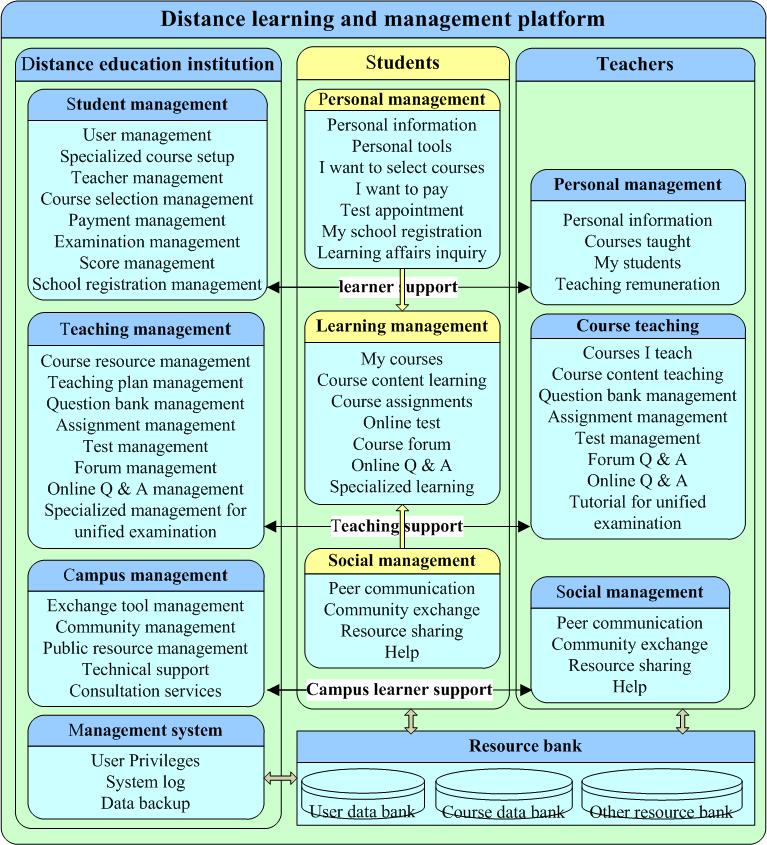V. LSMS system theory
Based on the above analysis, this paper further summarizes LSMS system theory in the following three aspects: (1) Systematically classify and optimize platform functions and form the functional framework of the platform using a service-oriented approach by defining learning activities based on services and by defining functions based on learning activities. (2) On the basis of the functional framework, logically divide platform functions by level structure, design the home page for each level based on human-computer interaction theory, and provide users with connected and integrated individualized services. (3) Adopt a loosely coupled component structure for the software to improve platform extensibility and reduce operation maintenance and upgrade costs.
The following sections describe the first two aspects.
1. Service-oriented platform functional framework
First, taking a service-oriented approach means starting from the users’ needs and organizing activities based on the services needed by the users, then connecting and integrating the platform functions based on the activities, ultimately achieving the optimal functional framework for the platform. In this process, the students are the most important user category as the final service recipients of the platform.
Second, the functional framework also needs to use system science theory to optimize basic service functions based on service needs. It should focus on building key service functions, especially individualized learning support functions, and achieving a rational overall plan for the system functions. As for the platform software system, it should strategically select and develop functions that are currently seldom used but have application potential, and guide users to use them. It could also leave room for expansion to facilitate addition and improvement of platform functions in a later date.
Combining the above content analysis and coding results, the service functional framework of the distance learning and management platform is made as in Figure 1.
(1) The platform's functional services for students include personal management, learning management and social management. Learning management is the primary content, and personal management and social management are ultimately to provide learning support to the students.
(2) Distance education institutions (including off-campus learning centres) and teachers provide support to students, including student support, campus support and teaching support.

Figure 1 Service Functional Framework of the Distance learning and management platform
2. Functional structure design for learning system
The functional structure is optimized by building on system science theory, human-computer interaction theory and connectivism theory. Platform functions are systematically classified from a service perspective, then organized to optimize the users’ internal and external knowledge network. The home page is designed based on principles of human-computer interaction, thus improving platform usability.
This paper designs the functional structure of the platform’s learning system only, whose functions and structure are mainly embodied in the three levels of the portal, personal space and course space. The home pages of the three levels are designed as follows in combination with the above content analysis:
2.1 Platform portal
In light of the above analysis, the platform portal functions are divided into three columns listed from left to right: recruitment & publicity, campus services and access channel. See Figure 2 for details of the main columns and their structures.
Recruitment & publicity includes introduction to the college, recruitment and enrollment, new student study guide, public resources and other relevant website links.
Campus services include college news, teaching and academic affairs, virtual campus construction (campus scenery, campus activities, virtual community) and distance education research. Website navigation, technical support, help and contact us are included at the bottom.